Showing 109–120 of 129 results

This volume studies the beginning and evolution of temple architecture in India and deals with temples constructed by different ancient and medieval dynasties in various parts of the country. It contains over a hundred plates of temples and carvings on them, cave faades, pillar descriptions, etc. Many Jaina temples are also covered.
This volume is a study of the beginning and evolution of temple architecture in India which covers sculptures and carvings as well. With over a hundred plates of temples and carvings on them, including cave facades and pillar depictions, it deals with temples constructed by the different ancient and medieval dynasties in Indian history, particularly the Early Western Calukyan and Later Western Calukyans, Pallava, Pandya, Cola, Hoyasala and Nayaka. With illustrations that include maps, plans of caves and even viharas and caityas, it undertakes a study of the temples found in different States of India. The research discusses the variations in plans and elevations to examine development of temple architecture over time and new experimentations in the building of temples by use of various materials. Reconstructing art and architectural styles from the remnants of the ruined temples in many places, it explains terms and concepts in temple building and architecture and cites examples of various temple styles and traditions including the best and the earliest ones. The focus is on the Dravida and Nagara temple styles and a third hybrid form of ÷ikhara that developed in the Deccan. Many Jaina temples are also covered. The book will prove extremely useful for scholars and students of Indology, particularly those studying Indian religious architecture.

This volume identifies and presents over one-hundred temples having more than one garbhagrha, categorized as dvikuta, trikuta, catuskuta, pancakuta, saptakuta, navakuta and caunsath. It features the temples in detail: their historical milieu, their iconography and the application of mandala(s) to their plans.
Hindu temples are raised to their deities. They are a means to acknowledge the deity and to enshrine his/her images. People honour and worship the deity. Within the Hindu pantheon, there is an array of divinities spread over three major sects Þ Vaisnava, Saiva and Sakta. All these sects have stemmed from the Vedic teachings and beliefs. Normally a temple is devoted to a single diety, having a solitary sanctum (garbhagrha), called ekakuta. In this volume, the author, through his serious research, has made a sincere attempt to identify, present and feature about one hundred temples with multiple garbhagrhas which are categorized as dvikuta, trikuta, catuskuta, pancakuta, saptakuta, navakuta and caunsath yogini temple.
This book delves deep into the details of these temples: their historical milieu, their iconography, the application of mandala(s) to their plans and so on. It also attempts to correct those errors crept in the earlier studies of other researchers in understanding and detailing a few multiple garbhagrhas. The author has given a brief description of such temples and has made a sincere effort to provide a relatively precise scale rendering of those temples, in a size and format, commensurate with their importance.
This volume can serve architects, temple planners, researchers, vastu experts and even historians as a sourcebook on temples with multiple garbhagrhas.
This coffee table book on contemporary art unravels the artistic journey of a talented artist in Naina Dalal, covering a span of fifty-nine years, mainly in the printmaking activities. It showcases her flight as a painter in thinking, perceiving, imagining, creatively objectifying and expressing her artistic acumen through the medium of printmaking processes, her lifetime quest. The book traces the stages through which this versatile artist matured traversing the different realms as a painter, lithographer, etcher and a calligraphy artist.
Further, this monograph is an embodiment of her several decades of artistic wisdom, maturity and thematic range. The images herein deliberate on many a political, social and ethical challenge that infects the society. Along with some shade of feminism, one also comes across her passion in reflecting the true conditions of humanity. These paintings should stir the consciousness of artists, connoisseurs and critics alike.r
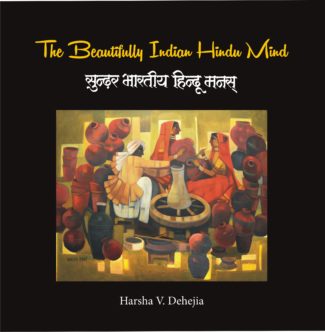
This book is a journey into that charmed and beautiful mind from which has arisen concepts and ideas, forms and textures, words and music, movement and stillness, philosophy and worship. myths and their celebrations.
It is through the Indian aesthetic mind and its concepts of the beautiful that the Indian civilization can be best understood, for in that mind are pages of history and voices of the past, in it will be heard the sounds of our dancers and in it will be seen the colours of our fabrics, it is a mind which treasures the aroma of the earth for in it we shall find terracotta figures that will whisper stories of times gone by. In that ancient mind silent stones will speak of sthapatis who not only built temples but also havelis, in that very mind rivers will whisper of saints who meditated on its banks and also of mountains which will beckon us to caves where truth was discovered, in that pristine mind stars will talk to us of astronomers who counted them, in that radiant mind we will meet scribes who created beautiful manuscripts and painters who immortalised our gathas and kathas through their kalam.
This book is a journey into that charmed and beautiful mind from which has arisen concepts and ideas, forms and textures, words and music, movement and stillness, philosophy and worship. myths and their celebrations.
The book is lavishly illustrated and is a visual delight.
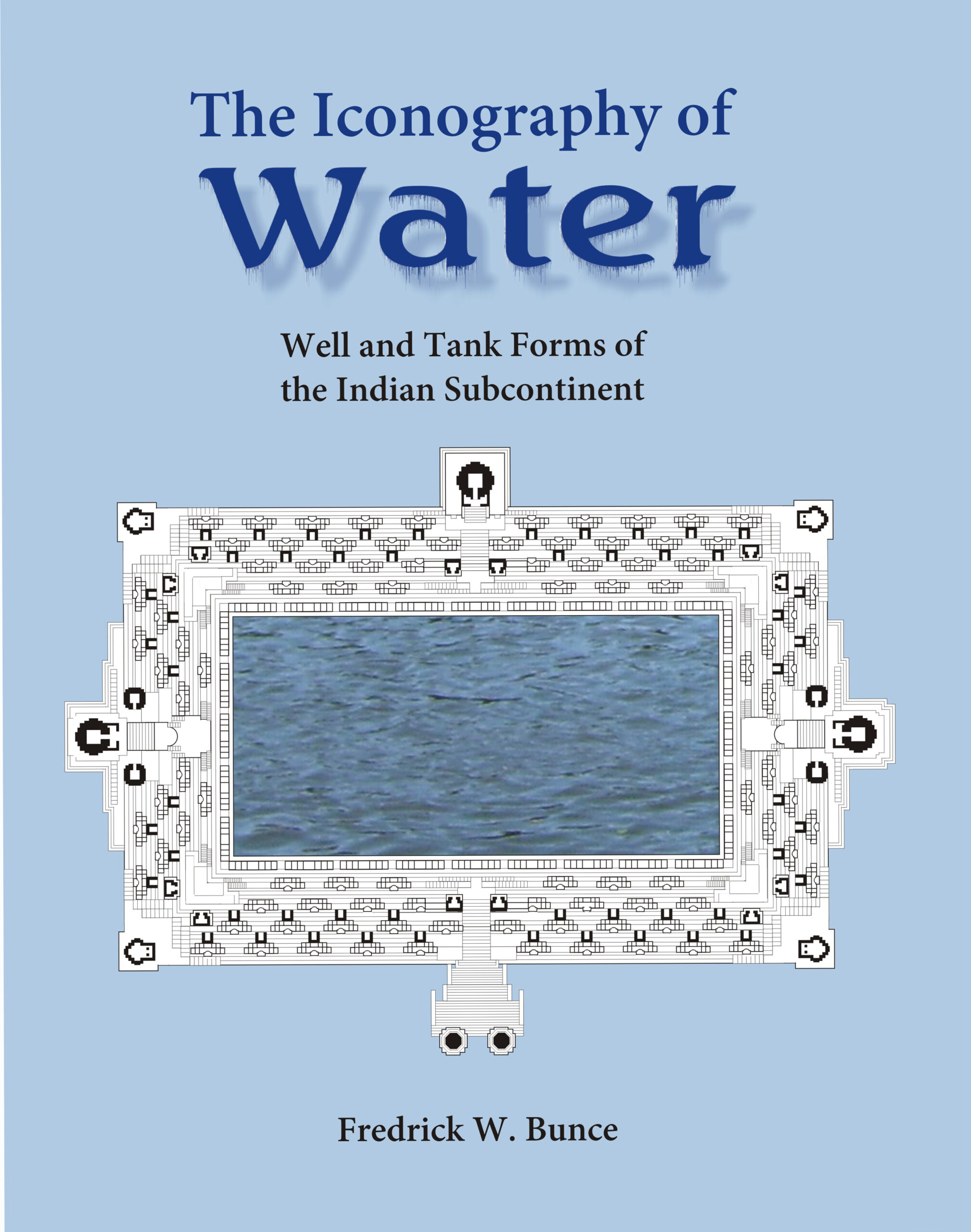
Baolis, bawadis, keres, kulams, kundas, talaos, tankas, wavs, zings were a neglected lot in the oeuvres of Indian architects and art. This volume, devoted to their study, is heavily loaded with the design of various structures and other vital information. Every detail is assiduously analysed, compared and rechecked to present the dimensions, proportions and relationships of each of these structures.
While numerous Indian monuments are well known in the annals of architectural research and excavation, a category of monuments baoli, bawadi, kere, kulam, kunda, talao, tanka, wav and zing was neglected in the oeuvres of architects and art. A few are familiar with the splendid beauty of the Surya Tank, Modhera; the vertiginous Canda Baoli, Abhaneri; the incomparable Rani-ki Wav, Patan; the magnificent Kalyani Tank, Hulikere; and the beautiful Rudabai-ni Wav, Adalaj. Thousands of such monuments are excellent in architectural beauty and design, apparently based on their primary utility drinking, bathing, religious purification and ornamental (recreation).
Water plays a quintessential role in the life of man. Its harvesting, preservation and careful use are of paramount importance, especially in those regions where rains are scanty. Thus took place the construction of these artificial water bodies. Many of them are within the precincts of temples and mosques, built in a time span of seventh to twentieth century ce.
This volume, devoted to the study of water monuments, is heavily loaded with the design of various structures and other vital information. Every detail in this book is assiduously analysed, compared and rechecked to present the dimensions, proportions and relationships of each of the various elements of the structures. Thus it unravels a number of keys by which others can unlock the mysteries and beauties of these neglected monuments.
It can be a precious collection for architects, historians, researchers and anyone who loves water bodies.
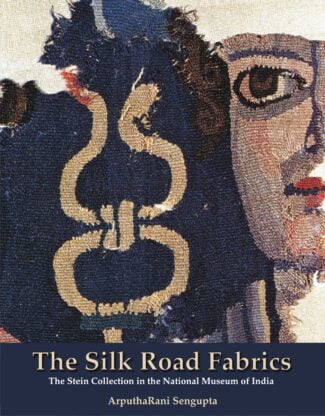
This volume on the burial silks, excavated from the sand dunes of Central Asia, offers a window to the history of a lost civilization revealing how the complex thread of interconnections linking East and West helped to shape new civilizations along the way.
During the Roman Empire when pure silk was valued like gold, burials in Han China and Central Asia were furnished with luxurious fabrics. Application of Western motifs and designs in the newly developed Chinese silk technology led to the emergence of a unique patterned silk.Silk fabrics connecting the Mediterranean with inmost Asia allowed transmission of knowledge across the world of ideas and beliefs. Archaeology in the Age of Discovery unearthed the exceptional Silk Road Fabrics from graves and shrines spanning several centuries and across the vast continental expanse of Central Asia, Egypt, Europe, China, and Japan. To Sir Aurel Stein (18561935) and others the various types of textiles excavated from the sand dunes of Central Asia were worth the risks. The burial silks offer a window to the history of a lost civilization revealing how the complex thread of interconnections linking East and West helped to shape new civilizations along the way.
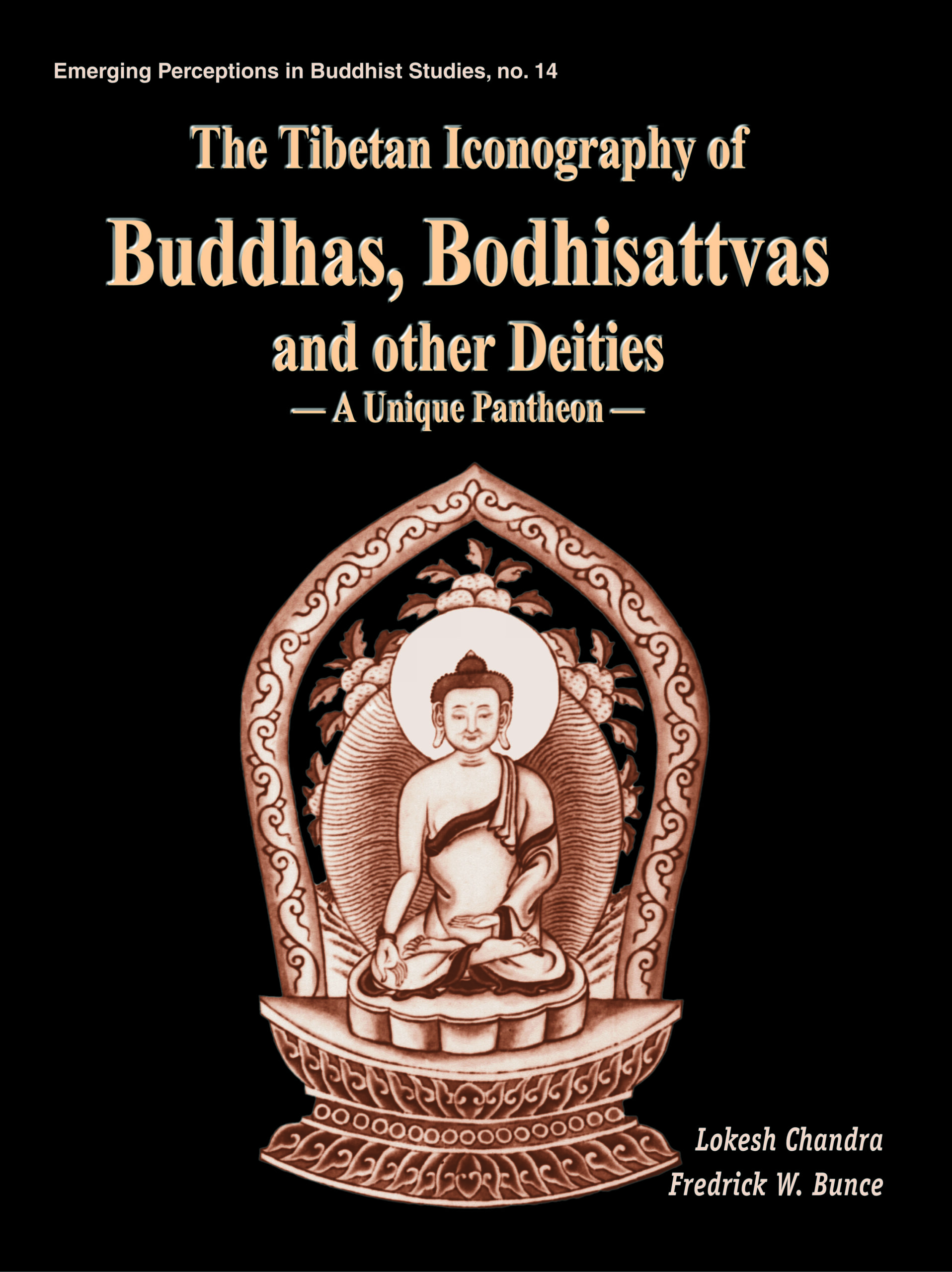
The book studies the 360 icons of the Chu Fo Pu-sa Sheng Hsiang Tsan pantheon referring to a rare set of woodcuts distinct among Buddhist pantheons. It analyses the unique features of this pantheon, pointing out the significance of each figure in the mythological/theological framework and minutely describing the iconography of the images.
Beginning with a few aniconic symbols, like footprints, the Bo tree or stupas, in the pre-christian Indian art, Buddhism, over the centuries, came to evolve a be-wildering array of deities in ever-increasing number of pantheons. Interestingly, in Buddhism today, there are perhaps as many pantheons as there are countries, or internal regions or sects within them. Chou Fo Pu-sa sheng Hsiang Tsan, in focus here, is one of these many Buddhist pantheons and acknowledgedly the culmination of Lamaist art. Authored by Rol. pahi.rdo.rje, alias Lalitavajra, (1717-1786): an imperial preceptor of Emperor Chien-lung (1736-1795), it is a rare set of 360 wood-cuts/xylographs, representing varying forms and manifestations of the Buddhas, Bodhisattvas, tantric and tutelary deities, arhats, sages, teachers, dharmapalas and protective divinities. It is also accompanied by 360 `eulogies’ in Chinese. Two internationally distinguished scholars here team up to present afresh the Chou Fo pu-sa Sheng Hsiang Tsan, aptly called a unique pantheon. Drawing together all the 360 wood-cut images in their vividly enlarged/enhanced versions without compromising their aesthetic integrity, the book not only captures their subtle iconic devices, but spells out as well, in meticulous detail, all their iconic attributes, like body postures, faces, arms/hands, mudras, asanas, vahanas, companions, and whether clam or wrathful. The book also incorporates the names of each deity/deity-form in Sanskrit, Manchu, Mongolian, Tibetan, and Chinese. Unveiling, for the first time, the images of a veritably unique pantheon, in their enlarged format, and their accompanying Chinese eulogies, the book is bound to fascinate anyone concerned with Buddhist art and iconography.

This book beautifully captures the spiritual essence of Arunachala, the sacred hill revered as Lord Shiva himself. With stunning visuals and rich insights, it explores its history, festivals, and divine significance.
“The importance of Tiruvannamalai is beautifully I encapsulated in the words of the Arunachala Mahatmya “”The supreme knowledge (Self-knowledge), the import of Vedanta, which cannot be attained without great difficulty, can easily be attained by anyone who sees the form of this hill from wherever it is visible or who even thinks of it with the mind from afar.”” This profound statement underscores the spiritual significance of Arunachala, a place that Sri Bhagavan Ramana held dear. Every verse of his Sri Arunachala Aksharamanamalai ends with the name Arunachala, reflecting his deep reverence and the powerful spiritual presence of this holy hill.<)P> Arunachala is truly the heart of the world, a secret kshetra where Lord Shiva himself abides. Unlike other holy places such as Kailasha, Kashi, and Chidambaram, which are sacred as the abodes of Lord Shiva, Arunachala is revered as Shiva himself. This hill of light stands as a living manifestation of divine energy, drawing devotees from all corners of the globe.
It gives me great pleasure to write the foreword to this wonderful pictorial book, authored by Dr. Ketu Raachandrasekhar and Vijay Sundararaman lyer, and published by Universal Publishing, on Tiruvannamalai, a divine kshetra that holds a special place in the hearts of devotees worldwide. This book is a visual and informational treasure trove, meticulously compiled to capture the essence of Arunachala, the sacred hill that is revered as a manifestation of Lord Shiva himself.
The captivating visuals in this book bring to life the rich culture of fire worship and the divine manifestation of Shiva as the Agni Linga, one of the Pancha Bhuta Sthalas. Each image is accompanied by comprehensive information that details the history of the temple, its intricate layout, the various important festivals celebrated throughout the year, and several other details not known to all.
A significant highlight of this book is the role of the Nagarathar Chettiar Community, who have been instrumental in the renovation and upkeep of the temple traditions for several hundred years. Their dedication and contributions continue to preserve the sanctity and heritage of this sacred site.
We hope this book serves as a source of inspiration and devotion, allowing readers to experience the divine presence of Arunachala through its pages. May the sacred hill of Arunachala continue to illuminate the path of spiritual seekers.”
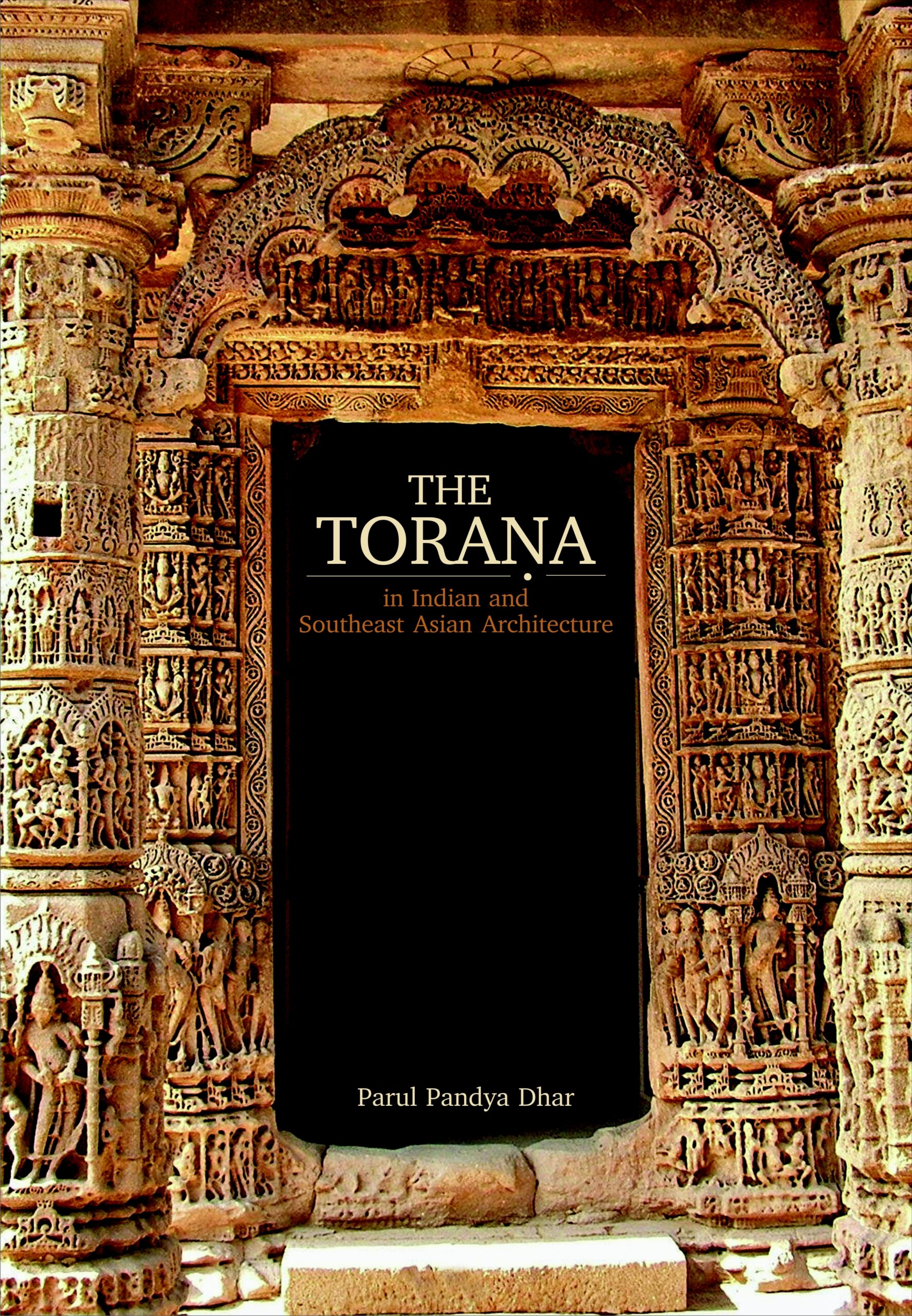
The book details the significance of the toranas arched portals or festoons in ancient and medieval architecture of South and South-east Asia, with special emphasis on Indian representation. The text is richly illustrated with photographs and line drawings from remote sites, museums and archival collections.
The present work discusses in depth the subject of toraªas (arched portals or festoons) in the ancient and medieval architecture of South- and South-east Asia, with special emphasis on Indian representations. Their antiquity and rationale; their continued presence in association with stupas, caves, temples, mosques, cities, forts, and palaces; their myriad forms and transformations; and their aesthetic and symbolic relationship to the structure in question are analyzed stage-by-stage in this book. The rich corpus of toraªas included here has been critically and comparatively analyzed in relation to traditional practice, as well as in the light of the medieval architectural treatises, historical records, and other literary sources. The approach is micro in the sense of being focused on a specific architectural element but macro in its regional and temporal span. In addition, the exposition reveals the grammar as well as the manifold visual formulations of the toraªa as representative of the basic principles of traditional Indian architectural ornament: integral to the structure, functionally apt, aesthetically significant, and visually evocative, with sound and sophisticated design principles. The text is richly illustrated, bringing together material scattered over several well-known as well as remote sites, museums, and archival collections. Whereas a major part of this book details the journey of the toraªa in ancient and medieval India, the section on early beginnings also includes references from Pakistan and Afghanistan, and the final chapter surveys, with a view to compare, parallel yet distinct expressions in Cambodia, Thailand, Champa, Indonesia, Myanmar, Nepal, and Sri Lanka.
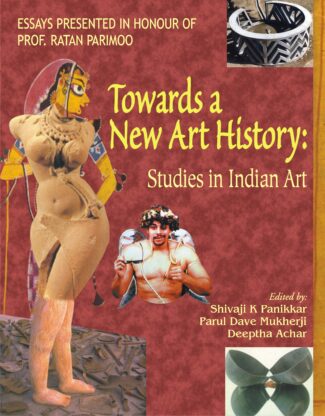
The essays here, challenging the boundaries and assumptions of mainstream art history, question many preconceived notions about meaning in representations artistic and art historical. Emphasizing on specific visual cultures within the dynamics of historical processes, they raise critical issues of art production, circulation and consumption and attempt to rescue traditional arts from a past that is hermetically sealed off from the present.
Mainstream art historical writing on Indian art has remained focused on identifying and defining stylistic schools, understanding evolutionary patterns and regional styles as well as understanding iconographic and narrative conventions and structures. The wide-ranging essays in this volume challenge the boundaries and assumptions of mainstream art history. Moving away from an art history structured by an art object-centered approach, this book gestures at a framework-oriented approach that calls attention to the political, social, economic structures that undergird art. It is an attempt to reformulate the discipline in a manner that can explain the field of the visual in a way that goes well beyond the explanatory capacity of conventional modes of studying Indian art. These essays question preconceived notions about meaning in representations artistic and art historical. They contest earlier claims about the objectivity of scholarship in general and history writing in particular as much as they critique the valorization of a purely individuated, subjective art criticism. In its attempt to historicize the practice of art, the book examines the economic, political and social implications of art that enable the re-situation of Art History among social science disciplines. The emphasis is on the study of specific visual cultures within the dynamics of historical processes. These essays raise critical issues of art production, circulation and consumption as well as production of meaning. Traditional arts have been studied from a critical perspective that extricates them from a past that is hermetically sealed off from the present. The opposition of High Art and non-art (read popular or mass visual culture) has been challenged. Breaking outside the ambit of high art, studies in the book extend from popular, mass-produced art to MTV imagery to digital art.

This book is a modest compilation of Warli art Þ of the Warli tribes of Maharashtra Þ that comes through an unbroken tradition of thousands of years. Warli art is simple yet rich. The paintings are expressive with profound truths which are brought forth in a most elementary format.
Warli painting has its own place in adivasi art of India. It takes its name from the Warli tribes of Maharashtra. It seems their roots are in the rock shelters of ancestors found in Bhimbhedka and Raisen in Madhya Pradesh.
Warli paintings are pointers they fulfil a purpose. Their presence in the hut is auspicious and is said to promote fertility, avert disease, propitiate the dead, etc. They show rituals at birth, marriage, a life full of dance and music, livelihood, connectivity with death and life after death. Artists express a kind of fulfilment they experience that is in harmony with nature and their gods and goddesses.
Warli art is simple yet rich. The material used for painting is simple, themes contained therein, philosophy of existence and even life beyond death, all are brought forth in a most elementary format. Many specimens of Warli art are contained in this book. The paintings are expressive with profound truths and project all that one needs to know how to live a happy life. Austere brown wall surface of huts displaying tribal designs with typical rock art motifs make Warli art different from other tribal paintings of India.
This book is a modest compilation of Warli art that comes through an unbroken tradition of thousands of years. But Warli art traditions are gradually vanishing. Money elsewhere is pulling artists away from their traditional occupation. Something has to be done by society to create conditions for them, to not get weaned away by lure of commercial avenues. This book is a small effort to save this art from falling off from the pathway of time continuum.

The Vairāgyaśataka of Bhartr̥hari is a part of his Śatakatrayī in which he extols the importance of seclusion, while refuting the merit of addiction, attachment, desire, lust, dissatisfaction and the exclusive control over materialism to attain a peaceful existence. It inspires one to attain supreme bliss by renunciation and spiritual pursuit.
“The Vairāgyaśataka of Bhartr̥hari is a part of his collective masterpiece Satakatrayī, the other two being the Nītiśataka and Śr̥ṅgāraśataka. The present volume is based on Kasmiri Śāradā manuscripts and provides translations and purports of each stanza both in Hindi and English.
This work extols the importance of seclusion, while refuting the merit of addiction, attachment, desire, lust, dissatisfaction and the exclusive control over materialism to attain a peaceful existence. It talks about the futility of desire and condemns infatuation, while highlighting the ignobility of servitude and underscoring the repulsiveness of lasciviousness towards women. It calls for renunciation, detachment from the fruits of action and liberation from sensual objects and desires.
While the work portrays the growing apathy towards worldly attractions and pleasures, it unveils the secrets of the significance of life, by which one should experience the transcendental reality through spiritualism. It essentially invites and inspires one to attain supreme bliss by renunciation and spiritual pursuit.”
| There are no products |